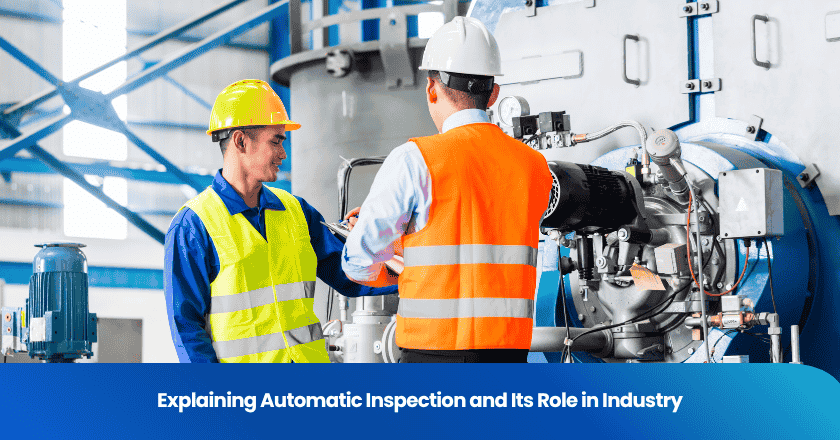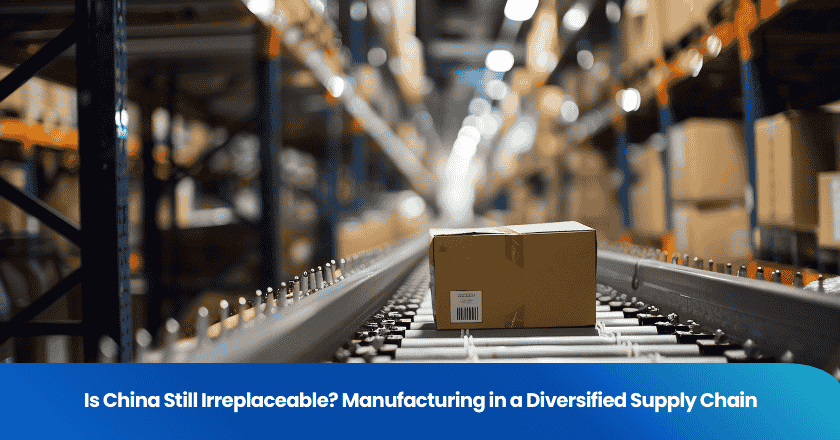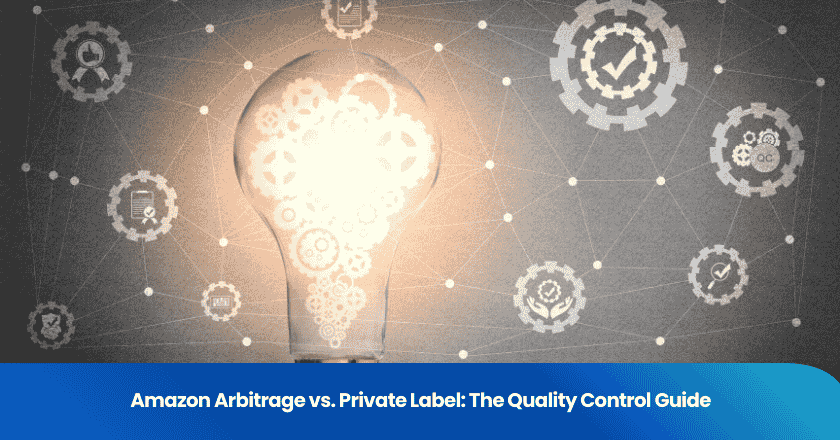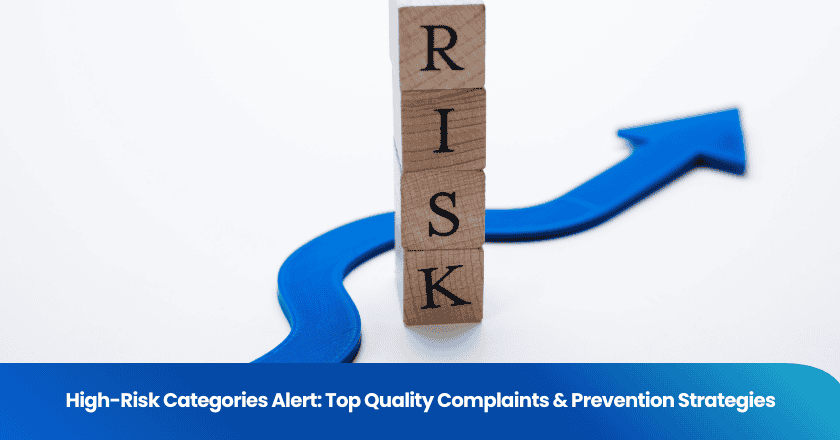
Automatic inspection lets you automatically examine products or processes using cameras, sensors, and AI without human input. You see this technology transform quality assurance processes across industries, as more than half of all automated quality checks in manufacturing now use machine vision systems. When you perform inspections with automated tools, you achieve high accuracy and rapid defect detection, ensuring only quality items move forward. This approach delivers assurance that your operations run efficiently and meet strict quality standards.
Key Takeaways
- Automatic inspection uses cameras, sensors, and AI to check products with minimal human involvement, ensuring high accuracy and efficiency.
- Implementing automated inspection reduces inspection time and resources while improving defect detection rates to over 99.5%.
- Automated systems provide consistent results, eliminating human error and variability, which enhances overall product quality.
- These systems collect valuable data that can optimize production processes and support continuous improvement in quality control.
- Industries like manufacturing, food and beverage, and pharmaceuticals benefit significantly from automated inspection, ensuring compliance and safety.
What Is Automatic Inspection
Definition and Purpose
You use automatic inspection to examine products or processes with minimal human involvement. This approach relies on advanced cameras, sensors, and artificial intelligence to analyze items as they move through production. The main goal is to ensure that every product meets strict quality standards before reaching customers.
When you implement automatic inspection in your operations, you achieve several important objectives:
- You reduce the time and resources needed for inspection tasks.
- You improve reliability and reproducibility in your results.
- You enhance efficiency and accuracy when identifying product defects.
- You minimize human error and ensure consistent quality in your final products.
- You can reach defect detection rates as high as 99.5%, which marks a significant improvement over traditional methods.
Note: Automated inspection systems help you maintain high standards and deliver products that consistently meet expectations.
Manual vs. Automatic Inspection
You may wonder how manual inspection compares to automatic inspection. Manual inspection depends on human inspectors to visually check products for defects. This method often leads to variable results because people can get tired, distracted, or inconsistent in their judgments.
Let's compare the two approaches:
| Aspect | Manual Inspection | Automated Inspection |
|---|---|---|
| Speed | Slow | Fast |
| Scalability | Limited | High |
| Initial Cost | Lower | Higher |
| Consistency | Variable | High |
| Labor Intensity | High | Low |
Manual inspection often detects only 60% to 90% of defects. This range can cause significant quality issues, especially in industries where precision matters most. Human inspectors may miss up to 15% of defects due to fatigue or distraction. Their accuracy drops during long shifts, and their judgments can vary from person to person. Manual processes also lack the data tracking needed for continuous improvement.
In contrast, automatic inspection delivers fast, consistent, and highly accurate results. Automated systems do not suffer from fatigue or subjectivity. You can rely on them to maintain high performance even in demanding environments. These systems also collect valuable data, which you can use to optimize your processes and further improve quality.
How Automated Inspection Systems Work
Automated inspection systems follow a structured process to ensure you achieve reliable and consistent results. You can break down this process into three main steps: image and data capture, data processing and analysis, and defect detection. Each step uses advanced technology to automate inspection tasks and deliver high-quality outcomes.
Image and Data Capture
You start by capturing images and data from the products or processes you want to inspect. Automated inspection systems rely on machine vision, which uses cameras, optics, and intelligent software to automatically collect images in real time. You often see both 2D and 3D cameras in these systems. The 2D cameras help you check surfaces for scratches, stains, or misprints. The 3D sensors allow you to measure depth and geometry, making it possible to spot deformations or missing parts.
Lighting plays a crucial role in this step. You need controlled illumination to make sure edges, labels, and defects appear clearly, without shadows or glare. Selecting the right lighting setup depends on the surface characteristics and environmental conditions. High-resolution imaging is also essential. When you use high-resolution cameras, you can detect even the smallest defects, although you must balance this with processing speed.
Tip: Proper lighting and high-resolution sensors help you achieve accurate and reliable imaging results, which is the foundation for effective automated inspection.
Data Processing and Analysis
Once you capture the images and data, automated inspection systems move to the processing and analysis stage. Here, you use artificial intelligence and machine learning to analyze the collected information. These systems often integrate multiple cameras and sensors, providing comprehensive coverage and enabling real-time analysis.
You benefit from advanced algorithms that convert raw data into actionable insights. For example, edge detection and pattern matching algorithms help you identify product features and spot inconsistencies. AI visual inspection systems analyze sensor data to find defects and irregularities. Deep learning models, especially convolutional neural networks (CNNs), excel at extracting relevant features from images. These models learn to recognize patterns and characteristics that indicate potential issues.
- AI visual inspection systems analyze real-time sensor data to identify defects and inconsistencies.
- CNNs are particularly effective in analyzing images due to their ability to learn hierarchical representations of visual data.
- Integration of machine learning and deep learning algorithms in inspection workflows enhances accuracy and speed in semiconductor manufacturing.
- AI-enhanced automated vision inspection systems utilize advanced algorithms, machine learning, and computer vision technologies to improve accuracy and efficiency.
- AI visual inspection employs machine learning and computer vision to analyze images and detect defects more quickly and accurately than traditional methods.
- Deep learning models, particularly convolutional neural networks (CNNs), are used to extract relevant features from images, enhancing the detection of product characteristics.
- Machine learning and deep learning algorithms are integrated into inspection workflows to provide improved accuracy and insights in manufacturing processes.
You also see automated inspection systems using high-speed CMOS sensors and structured LED arrays for consistent lighting. These technologies ensure you get detailed images from multiple angles, which is vital for thorough inspection.
Defect Detection
The final step in automating inspection tasks is defect detection. Automated inspection systems use the processed data to identify and classify defects in real time. You benefit from early defect detection, which allows you to address issues before they impact product quality or reach customers.
State-of-the-art automated inspection systems achieve defect detection rates exceeding 90%. Deep learning models can reach accuracy levels as high as 98%. These systems outperform traditional human inspection, which typically detects only 60-70% of defects.
Automated inspection systems differentiate between critical and non-critical defects by training AI models on extensive datasets. You define what counts as a critical flaw versus a cosmetic one for your specific products. High-resolution imaging and advanced algorithms help you detect both visible and near-invisible flaws, ensuring comprehensive inspection.
- State-of-the-art automated inspection systems achieve defect detection rates exceeding 90%.
- Deep learning models can detect defects with an accuracy of 98%.
- AI systems are trained on extensive datasets of real-world defects, enabling them to recognize patterns and categorize flaws effectively.
- The training process includes defining what constitutes 'critical' versus 'cosmetic' defects for specific products, which enhances accuracy in assessments.
- Advanced algorithms and high-resolution imaging are utilized to detect both visible and near-invisible flaws, ensuring comprehensive inspection.
Note: By automating inspection tasks, you ensure consistent quality, reduce waste, and maintain a competitive edge in your industry.
Automated Visual Inspection Applications
Manufacturing Lines
You see automated inspection systems transform manufacturing lines by enabling real-time defect detection and quality control. These systems use high-resolution cameras and AI to inspect products as they move along the conveyor. For example, 3D position detection ensures precise alignment of EV battery cells before welding, while vision-guided robots handle complex tasks like picking up entangled wire hooks.
Automated visual inspection systems help you maintain consistent production flow by removing defective products immediately, reducing downtime and costly interruptions.
Electronics and Semiconductors
You use automated visual inspection to achieve over 99% accuracy in detecting defects in electronics and semiconductor manufacturing. These systems reduce downtime by 25% through early defect detection and eliminate human error, speeding up production. Automated inspection systems identify flaws at scale, improve yield rates, and provide traceability by linking inspection data to quality control systems. This approach minimizes recalls and warranty claims, ensuring consistent product quality.
Benefits of Inspection Automation
Accuracy and Consistency
You achieve remarkable improvements in accuracy and consistency when you implement automated inspection systems. Machines do not tire, so you get consistent inspection at high speeds, which manual methods cannot match. AI-driven software detects defects in real time and applies the same standards to every product, allowing you to take immediate corrective action. Manual inspection can miss up to 15% of defects and may falsely reject 35% of good parts. Automated inspection systems, on the other hand, reach over 99% detection accuracy and maintain consistent performance at scale. Automated visual inspection ensures you detect predefined defects at high speed, making it ideal for large-scale production.
Speed and Efficiency
Automated inspection systems dramatically increase the speed and efficiency of your production processes. AI-powered quality inspection can boost inspection speed by up to 50%. You may see a reduction in inspection time of 70-90%, and automated systems can operate 50 to 400 times faster than manual inspection. For example, a manufacturer of electronic components achieved a sixfold improvement in throughput with AI inspection. Drone inspections that once took a full day now finish in just 30 minutes. Automation allows your machinery to produce more products in less time, enhancing overall throughput and reliability. You also benefit from reduced costs related to human labor and errors, while improving safety and quality.
Quality Control and Waste Reduction
Automatic inspection transforms your approach to quality control and waste reduction. AI-powered inspection technology enhances product quality and efficiency while significantly reducing defects. Traditional manual inspections often fall short in fast-paced manufacturing, but automated visual inspection addresses these challenges. You benefit from improved defect detection accuracy, lower false reject rates, fewer recalls, and higher customer satisfaction. Early defect detection prevents rework, reduces material waste, and minimizes costly recalls. Manufacturers now use smart sensors, AI analytics, and digital twins to boost energy efficiency and minimize waste, achieving measurable returns quickly. By addressing waste at its source, AI provides insights that help you develop more efficient waste management systems, supporting your sustainability goals and ensuring consistent quality checks.
Technologies in Automated Inspection Systems
Machine Vision
You rely on machine vision to achieve higher precision and accuracy in automated visual inspection. This technology uses advanced cameras and computer vision algorithms to capture and analyze images of products during production. Machine vision systems help you identify defects and flaws that may not be visible to the human eye. Recent advancements have made these systems even more powerful. For example, deep learning and edge computing now allow you to process data instantly and detect issues in real time.
Tip: Machine vision and computer vision technologies give you the tools to maintain strict quality control and improve production outcomes.
Artificial Intelligence
Artificial intelligence brings adaptability and learning to your automated inspection systems. You use AI to analyze large volumes of image data, spot new defect patterns, and improve accuracy over time. AI systems learn from each inspection, so they adapt to changes in manufacturing and catch defects that traditional systems might miss. For example, AI-powered inspection can organize quality data, support continuous improvement, and help you understand ongoing quality issues.
Note: Artificial intelligence and computer vision work together to deliver higher accuracy and precision in automated visual inspection.
Sensors and Automation
You depend on a range of sensors to support automated inspection and quality control. Sensors capture data about products and processes, helping you detect flaws and maintain consistent standards.
Different types of sensors serve specific roles in manufacturing and inspection:
| Sensor Type | Description | Typical Applications |
|---|---|---|
| Contact Sensors | Detect conditions through direct physical touch. | Security systems, industrial automation, robotics. |
| Non-Contact Sensors | Detect objects or conditions without physical touch. | Security lighting, industrial automation, automotive. |
| Motion Sensors | Detect movement or changes in position. | Security systems, robotics, automated inspection. |
| Level Sensors | Measure liquid levels continuously. | Fuel tanks, sump pumps, automated monitoring. |
| Temperature Sensors | Measure temperature variations. | HVAC systems, food processing, automated inspection. |
| Vision Sensors | Capture images for analysis and inspection. | Quality control, automated inspection in manufacturing. |
| Pressure Sensors | Measure pressure levels in various environments. | Industrial processes, automated inspection of systems. |
| Flaw Sensors | Detect defects or flaws in materials. | Quality control in manufacturing, automated inspection. |
Sensors and automation work together to ensure you achieve reliable inspection and maintain high standards throughout production.
You have seen how automatic inspection transforms quality control and efficiency across industries. Adopting these systems positions you for future competitiveness as the manufacturing sector leads market growth, driven by the need for defect minimization and automation.
- The market for automated inspection is projected to more than double by 2033, fueled by advancements in AI, robotics, and data analytics.
- By 2025, you can expect smarter factories as AI and deep learning enable adaptive defect recognition and higher quality standards.
FAQ
What is the main advantage of automatic inspection?
You achieve higher accuracy and consistency in quality control. Automated systems detect defects quickly and reduce human error, helping you maintain strict standards across production.
How does AI improve automated inspection?
AI analyzes images and sensor data to spot defects. You benefit from machine learning models that adapt to new patterns, increasing detection rates and reducing false positives.
Can automated inspection systems work with different products?
Yes, you can configure automated inspection systems for various products.
You adjust settings and train AI models to recognize specific defects or features in each product type.
Is automated inspection difficult to implement?
You find implementation straightforward with proper planning. You select suitable cameras, sensors, and AI software, then integrate them into your workflow. Training and support help you maximize system performance.
Grow your business with TradeAider Service
Click the button below to directly enter the TradeAider Service System. The simple steps from booking and payment to receiving reports are easy to operate.



